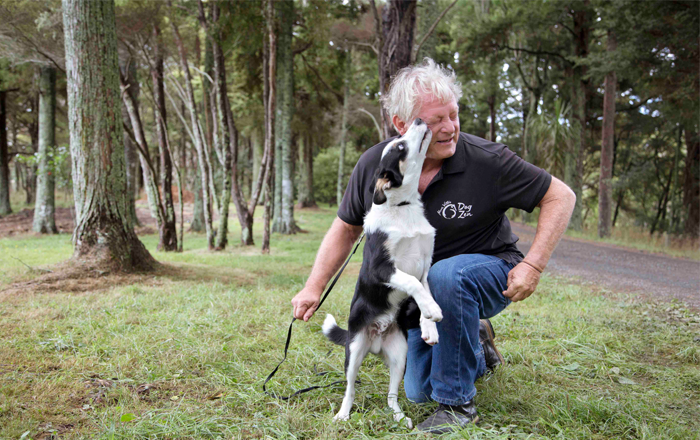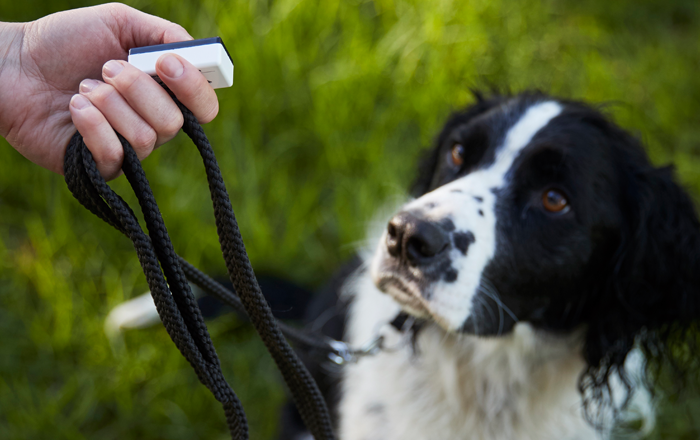We all know the saying “prevention is better than cure” - in an ideal world, early puppy training and socialisation would prevent behaviour issues down the track.
However, adopting an older pup or dog, traumatic incidents, a dog’s natural instincts and a lack of early training can all lead to a dog that has challenging behaviours.
But don’t despair, in most cases these issues are entirely treatable with the right training. You can teach an old dog new tricks!
Whether you’re working on reactivity, hyperactivity, barking or separation distress, in this article I go through some tips to help you successfully re-train an older dog.

Mark Vette is a world-renowned Animal Behaviourist, Zoologist and Trainer. He brings together a unique combination of academic studies with 40 years of applied clinical animal behaviour consulting and treatment. Mark is a member of the International Association of Animal Behaviour Consultants. This article was written by Mark and the views expressed are his own.
Focus on the bond
If you want to work through an issue with your dog, first and foremost you have to invest some effort into a strong mentor bond. This is not just about loving your dog and them loving you back (though that’s a great start!). It’s about your dog seeing you as a trusted mentor, which allows them to relax, look to you for direction, take your lead, and be more responsive to you rather than feeling on edge or easily distracted. There are many training techniques you can use to build your mentor bond, but the best way to start is by simply controlling all the resources your dog has access to - whether this be food, freedom or contact. Show your dog you are in charge of these things they value. Other good ways to build your bond include play, positive reinforcement training, responding to your dog’s body language, and plenty of cuddles and contact!


Don’t reward undesirable behaviours
One crucial step in dog training is to stop rewarding the behaviours you DON'T want. It's as important as rewarding the behaviours you do want!
Dogs are smart and quickly learn what gets them attention, treats, play, freedom or other positive outcomes. If we inadvertently reward undesirable behaviours, they are MUCH more likely to be repeated. Even just saying “Quiet” to your dog when they are barking to no effect can constitute a reward, as it’s still attention! Or if your dog jumps on guests when they come over and you push them off, your dog may still interpret that as desired handling and continue jumping. Or if your dog is biting the lead and you’re trying to tug it out of their mouth, you’ve now made it a tug-of-war game so you’re rewarding that lead-biting.
Mark (and reward) the behaviours you want
To do the right thing, your dog needs to know what the right thing is. The right thing might be keeping all four paws on the ground when meeting someone new, staying calm in the face of something they usually find a bit scary, or stopping barking. Whatever it is, use a marker to tell your dog the exact moment they did what you wanted. I favour a clicker, a small hand-held tool that makes a distinctive click sound, as it’s always consistent and carries no emotional overtones. However, you can also say ‘yes’ in a nice calm, positive tone of voice. When your dog does the right thing, immediately click or say ‘yes’, then give a treat. A click or ‘yes’ must ALWAYS be followed by a treat, as this is how your dog learns they’ve done the right thing. To introduce a clicker for the first time, simply throw treats on the ground and click as your dog eats them, then use it to practise some basic commands. Take care they don’t get frightened of the clicker so start with it in your pocket to buffer the volume a bit.


Start in a controlled environment
If you’re working on a challenging behaviour, you can’t wait until you're in the situation to try and train your dog. You need to set up a controlled training environment to practise in first. So, if your dog is reactive to visitors, don’t wait until a stranger randomly knocks at the door to try and correct that response. Instead, set up a dedicated training session - ask a friend to come around at an arranged time, prep your friend in advance about non-threatening body language, get your dog calm and focused on you to begin with, have yourself set up with your training tools, then practise a meet and greet with that friend a few times in a row so your dog gets a chance to settle and understand what’s expected of them. Your dog is more likely to succeed this way, and the more your dog succeeds, the more you re-wire their automatic responses into positive ones.
Set your dog up to succeed
Consider anything in your dog’s environment that may help overall with their behaviour. If you have a high energy dog and may not be fulfilling their exercise needs, consider a dog walker or doggy daycare. If your dog struggles with recall, have them drag a long lead at the park so that they can enjoy the sense of being off lead but you have a way to get them back if you need to. If your dog struggles with separation anxiety, think of some ways you can make them more settled, e.g. by installing a dog door to give them access to a safe space inside, or by getting a pet camera so you can communicate with them while you’re out. A dog that’s getting appropriate exercise, stimulation and a good quality diet will generally be better behaved.


Manage your own state
Our dogs are acutely aware of how we’re feeling. Our posture, voice tone, body tone and pheromones are speaking to our dog all the time, so if you’re anxious, stressed, frustrated, angry or even just distracted, they sense that and they’ll take their lead from you - how can you expect them to react calmly when they can sense you’re anxious? Though it can be tough in the early days, try to exude calm confidence when training, it can have a huge impact on how they respond.
Be patient
Your dog is a unique being, not a robot, they are not perfect and neither are you. Be patient in the process and remember you are unwiring established behaviours as well as rewiring new responses. You’ll get there with the right approach and consistency!
Need help with your dog’s behaviour?
Resolving challenging behaviours requires the right training approach, and Southern Cross Pet Insurance gives you access to Mark Vette’s renowned Virtual Training Schools at a discount.
From basic commands to resolving tough behavioural issues like aggression, hyperactivity and anxiety - Mark will guide you through your training with an easy-to-follow video course and Live Coaching Sessions for personalised help.
Use the code SOUTHERNCROSSPET in the Dog Zen checkout to get 15% off your Dog Zen monthly subscription if you sign up before 30 September 2024.
Always consult your vet on the best way to look after your pet. And to avoid unexpected costs, make sure your pet is insured.
Have a look at our pet insurance plans to choose the right insurance plan for your pet.
